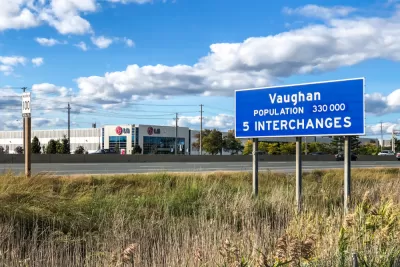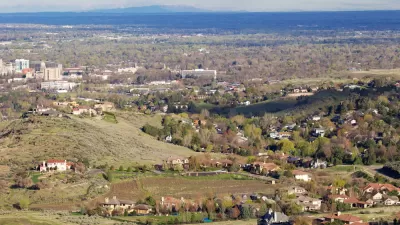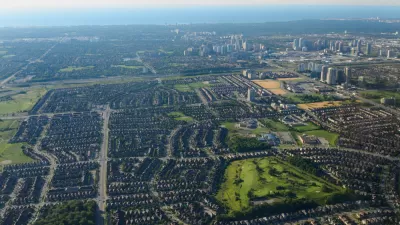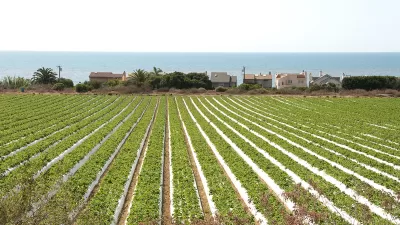The York Regional Council took a significant step toward allowing development on a large chunk of the area's greenbelt—a move opponents say will set a dangerous precedent.

Fatime Syed reports for The Narwhal:
On Oct. 28, York Regional Council — the political body that includes mayors and regional representatives of nine municipalities just north of Toronto, including Markham and Vaughan— voted 13 to 5 in favour of Regional Official Plan Amendment 7, which proposed to change the designation of 1,400 acres of Greenbelt lands from agricultural to rural.
While four mayors voted to approve the amendment, Syed reports that local councilmembers from cities represented by those mayors oppose the development of the greenbelt. Supporting the amendment, however, are development interests with connections to Premier Doug Ford’s Progressive Conservative party. Ford ran for office on a platform that included a proposal to relax the boundaries of the Toronto Greenbelt for development.
Supporters of urban growth boundaries (another term for greenbelts) argue that the land use regulation tool is necessary as an antidote to sprawl. Opponents say fringe development can provide relief to expensive housing markets. In recent years, urban growth boundaries have emerged as a wildfire risk mitigation tool in cities located at the wildland-urban interface.
The Ontario Ministry of Municipal Affairs and Housing must still approve the amendment before it can take effect, reports Syed.
FULL STORY: In Ontario’s York Region, council just voted to allow development on 1,400 acres of Greenbelt farmland

Study: Maui’s Plan to Convert Vacation Rentals to Long-Term Housing Could Cause Nearly $1 Billion Economic Loss
The plan would reduce visitor accommodation by 25,% resulting in 1,900 jobs lost.

Alabama: Trump Terminates Settlements for Black Communities Harmed By Raw Sewage
Trump deemed the landmark civil rights agreement “illegal DEI and environmental justice policy.”

Why Should We Subsidize Public Transportation?
Many public transit agencies face financial stress due to rising costs, declining fare revenue, and declining subsidies. Transit advocates must provide a strong business case for increasing public transit funding.

Paris Bike Boom Leads to Steep Drop in Air Pollution
The French city’s air quality has improved dramatically in the past 20 years, coinciding with a growth in cycling.

Why Housing Costs More to Build in California Than in Texas
Hard costs like labor and materials combined with ‘soft’ costs such as permitting make building in the San Francisco Bay Area almost three times as costly as in Texas cities.

San Diego County Sees a Rise in Urban Coyotes
San Diego County experiences a rise in urban coyotes, as sightings become prevalent throughout its urban neighbourhoods and surrounding areas.
Urban Design for Planners 1: Software Tools
This six-course series explores essential urban design concepts using open source software and equips planners with the tools they need to participate fully in the urban design process.
Planning for Universal Design
Learn the tools for implementing Universal Design in planning regulations.
Smith Gee Studio
Alamo Area Metropolitan Planning Organization
City of Santa Clarita
Institute for Housing and Urban Development Studies (IHS)
City of Grandview
Harvard GSD Executive Education
Toledo-Lucas County Plan Commissions
Salt Lake City
NYU Wagner Graduate School of Public Service





























